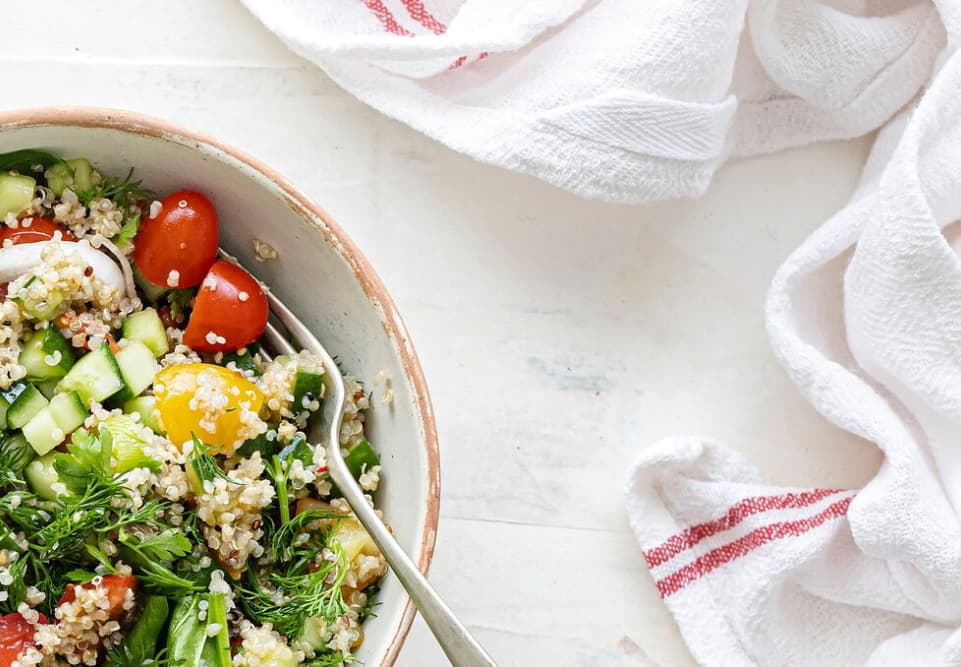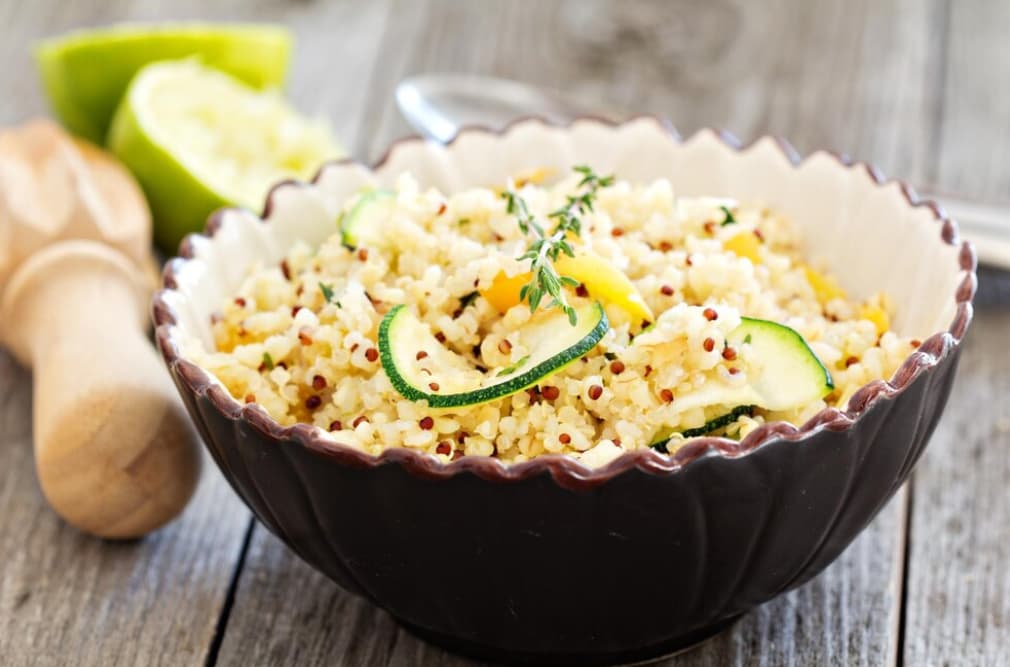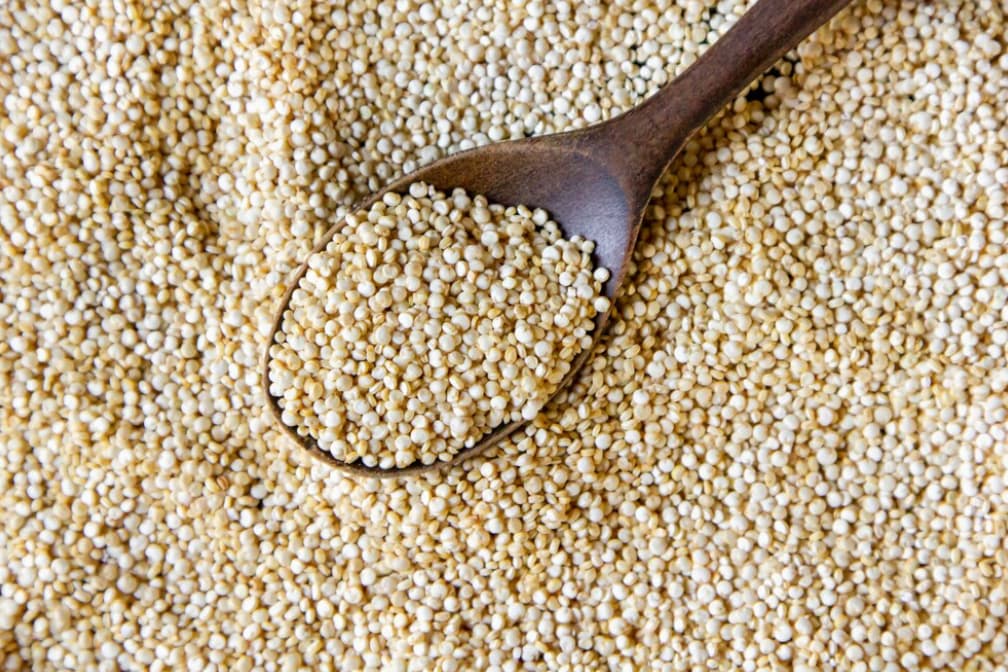The culinary world is ever-evolving. No longer are we confined to the conventional trifecta of potatoes, pasta, and rice to supplement our meals. A myriad of nutritious alternatives like couscous, and the topic in focus – quinoa, are now popular choices. Quinoa, while a versatile food item, leaves some puzzled about its role in traditional recipes. This article dives deep into the world of quinoa and its potential as a viable rice substitute.
While discussing whether quinoa is a suitable rice alternative, you may also like to explore a delightful rich tea biscuit recipe that complements your quest for healthier food options.
The Nutritional Riches of Quinoa
Quinoa is often mistaken for a grain, yet it is a seed abundant in a range of vitamins and minerals, offering an array of health benefits. This nutrient-dense food serves as a potent source of antioxidants, playing a critical role in combating harmful free radicals. These antioxidants are key to maintaining skin health and protecting against various diseases, including cardiovascular disorders and cancer.
In comparison to traditional grains like rice, quinoa stands out due to its high content of essential nutrients, such as magnesium, iron, fiber, and zinc. Each of these nutrients contributes uniquely to the body’s overall well-being:
- Copper: Often underestimated in dietary importance, copper is fundamental for maintaining heart health. Notably, many Western diets lack this crucial mineral;
- Folate: As a member of the B-vitamin family, folate is essential for tissue growth and cellular function. This is particularly vital during pregnancy for both the mother and the developing fetus;
- Iron: Playing a pivotal role in oxygen transportation throughout the body, iron is carried by red blood cells and supports a multitude of bodily functions;
- Magnesium: Despite being underrepresented in many Western diets, magnesium is essential for a wide range of bodily processes;
- Manganese: This trace mineral is necessary for metabolism, growth, and development, contributing significantly to overall bodily function;
- Phosphorus: Critical for bone health and the maintenance of various body tissues, phosphorus is a key mineral for physical development and repair;
- Zinc: Involved in numerous chemical reactions within the body, zinc is vital for maintaining general health and supporting immune function.
Therefore, incorporating quinoa into one’s diet not only provides a delicious alternative to traditional grains but also ensures a rich intake of various nutrients essential for maintaining good health and preventing nutritional deficiencies.
Comparing Quinoa and Rice
- Quinoa surpasses rice in nutritional value, offering a more comprehensive health benefit. Notably, it is a complete protein source, making it an exceptional dietary addition. Its soft texture allows for versatility in culinary use; quinoa can be ground into flour, presenting an advantage over rice in this respect;
- In terms of appearance, quinoa, like rice, is available in various colors such as tan, red, black, and the more common off-white;
- The flavor differences among these varieties are subtle, so the choice of quinoa color can be based on the desired aesthetic impact on the dish being prepared, providing a unique visual element.
Similar to most types of rice, it’s advisable to wash quinoa before cooking. While modern processing methods apply to both quinoa and rice, quinoa naturally contains saponin, a substance that acts as a natural pesticide. Rinsing quinoa thoroughly in water helps remove any remaining traces of saponin. This process is akin to washing rice to eliminate excess starch. Place the quinoa in a deep bowl, run cold water over it, and use your hands to agitate the seeds gently. After draining, repeat the process once more to ensure thorough cleaning. This preparation step is crucial for achieving the best culinary results and maintaining the integrity of quinoa’s natural flavor.
Quinoa as an Alternative to Rice in Cooking

Quinoa is a versatile ingredient and can indeed serve as a substitute for rice in many culinary applications. While it might even work in dishes like risotto, it’s important to remember that quinoa’s distinct flavor and slightly crunchy texture will alter the dish’s overall taste and mouthfeel compared to rice.
However, for recipes like fried rice, quinoa might not be the best replacement. Rice’s ability to crisp up when fried gives it a unique texture that quinoa doesn’t quite match. But don’t let that discourage you from experimenting with quinoa in other dishes. It’s excellent as a side dish, combined with stir-fried vegetables, or included in stews. Quinoa can also be a nutritious addition to salads, casseroles, soups, stuffing, and even veggie burgers.
Quinoa’s versatility extends to breakfast options, where it can be transformed into a hearty porridge. For a twist on traditional desserts, try substituting rice with quinoa in pudding recipes, which introduces a completely different texture and flavor profile.
When using quinoa as a rice alternative, keep in mind that it cooks faster, even compared to white rice. Experiment by adding various ingredients like caramelized onions or other vegetables. With its unique qualities, quinoa provides an opportunity to explore new and favorite ways to enhance your meals.
Uses of Quinoa as a Rice Alternative

Quinoa, with its unique flavor and slightly crunchy texture, proves to be a versatile rice substitute in various culinary applications. You can easily incorporate quinoa into your recipes, adding a nutritious twist to your dishes. Here are some creative ways to use quinoa:
| Quinoa Application | Description |
|---|---|
| Side Dish | Pair quinoa with stir-fried vegetables to create a delicious and healthy side dish. |
| Ingredient in Various Dishes | Quinoa can enhance the flavor and nutritional value of stews, salads, casseroles, and soups. |
| Stuffing for Veggie Burgers | Use quinoa as a wholesome stuffing for veggie burgers, adding a delightful texture and flavor. |
| Breakfast Options | Start your day with quinoa as a hearty porridge, or substitute it for rice in pudding recipes. |
It’s important to note that while quinoa works admirably in these roles, it may not achieve the same crispy texture as rice when fried, making it less suitable as a fried rice substitute. Nonetheless, the versatility of quinoa opens up a world of culinary possibilities, allowing you to explore new flavors and textures in your favorite dishes.
Conclusion
Quinoa is not just a novel food trend but a nutritional powerhouse worthy of incorporation into everyday meals. This versatile seed is nutritionally superior to many grains, including rice, providing unparalleled health benefits thanks to its potent antioxidant capacity and the wealth of minerals it offers. Moreover, it’s a complete protein source and a boon for gluten-free diets, thus unlocking new culinary possibilities. Whether it’s a savory stir-fry, a hearty casserole, or a comforting bowl of breakfast porridge, substituting quinoa for rice can be an enriching culinary adventure. Therefore, the pursuit of healthful eating will be undoubtedly propelled by embracing the versatility and nutritional dynamism of quinoa.
